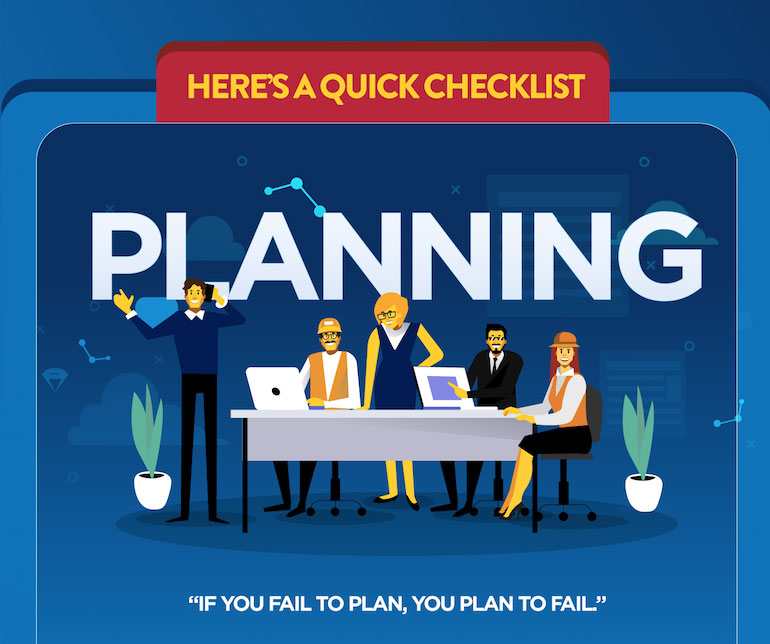Growing a career is not a walk in the park. When you have a vision of where you want to be as a professional, you channel all your energy towards reaching that goal. For many, it takes years of hard work, perseverance, and tons of decision-making to achieve one’s dream career.
While you’re in the middle of working nonstop for your goals, it is easy to get caught up in the rigorous cycle of constantly proving yourself to take another step up the corporate ladder. The higher the spot, the stiffer the competition. And so you’ll keep going and going, until at one point, your work becomes your life.
And there lies the problem.
Work-life balance is a common struggle among professionals from way before and even up to now. As the name implies, it is the ideal state where one perfectly manages their time, energy, and resources between their jobs and personal life.
Sadly, many professionals find achieving that balance a difficult task to take on, as it also takes commitment and consistency for it be embedded into your system. In fact, 16% of survey respondents cited experiencing work-family imbalance while being part of the workforce, along with other prevalent issues.
And since there is no one-size-fits-all solution to enjoying a perfect work-life balance, it is up to the person to figure out what works best for their lifestyle and work habits.
It is challenging but not unreachable. How does one develop a healthy work-life balance? Let’s find out!
Key Elements of Work-Life Balance
Achieving work-life balance starts with baby steps. While you can opt to make drastic changes at once, it will help if you naturally form positive habits over time to develop lasting results.
Simple habits contribute a lot.
But first, before you can develop a routine, you must identify where the imbalance takes place. To help you determine which aspect of life you’re lacking at, look at these key elements: time, energy, and resources.
Time
Ask yourself: Where do you spend most of your time at?
By simply answering this question, you will already have a big clue on why you’re not anywhere near achieving work-life balance. Where you spend your time is key in identifying how you can start to change your ways.
Of course, jobs require employees to be at work for 40 hours in a five-day workweek at an average. So how would you know if time is indeed taking your time away from your loved ones?
First and the most evident, the amount of time spent outside the required work hours is what you should be looking at.
How often do you work overtime? How long do you stay at work after office hours? These matter because this is where work-life imbalance usually starts, especially if done repetitively.
If you work remotely or have a homebased job, how much time do you actually spend being really “at home” with your family?
More than quantity, it’s quality that truly counts.
Review your schedule. See where you’ve been spending time lately and look for patterns. By the time you analysed it, you will be more conscious about your time and how to use it more efficiently.
Energy
While it’s true that where you spend your time is where you spend your energy, there’s still a bit of difference. You might be spending the whole day working on multiple productive tasks and still feel hyped, then you do this one dreadful task for five minutes and feel instantly exhausted.
The most obvious sign of work-life imbalance is stress. When you feel pressured and tired all the time, regardless of whether you are at home or at the office, it is easy to conclude that you’re taking an important aspect of your life for granted.
How much energy do you spend on your gadgets versus actually having a face-to-face conversation with your significant other, perhaps? How about taking a break from work and going on a vacation for a few days?
The amount of energy you channel on certain activities is a key element to achieving work-life balance. This puts premium on your interests and your willingness to exert efforts on things that truly matter to you.
Resources
Aside from time and energy, using your resources impartially can cause serious conflicts when left unaddressed.
Where you spend your money and resources can tell you which ones you value the most. Is it material things? Experiences? Travel? Is it living in the moment and going all out, or saving for the future? These dictate your actions and inclinations.
Work-life balance goes beyond scheduling—stepping back and managing all aspects of your life is much more important. Dig deeper and you’ll be surprised with the realizations you can uncover every step of the way.
Good Habits to Achieve Work-Life Balance
Now that we have discussed these key elements, which habits contribute to achieving work-life balance?
When you’re at work
Leave work on time
Come to work on time and leave on time. Practising this everyday will not only provide you more time for matters outside of work, but will also make you more efficient.
Staying up late for overtime work doesn’t always mean you are being productive, especially if it is becoming a culture in your workplace. In fact, it would mean that you haven’t managed your workload within the work hours allotted, which could affect both you and the company.
Unless there’s really a need to work beyond office hours, like if there are unforeseen circumstances or tight deadlines, then overtime work isn’t really a healthy and practical option.
Manage your time
Daily workload can be overwhelming, which is why time management is key.
In order to accomplish tasks, arrange and work on them according to priority. This way, you will be able to focus on each deliverable and maximise the time given to you.
Want to learn more about time management skills for IT professionals? Here are some tips.
Try flexible working
Office, home, office, home. If this is your routine, then you might (if you haven’t already) experience burnout.
Flexible working can be a solution to this. It doesn’t only help increase productivity, it also helps employees be more creative and efficient.
Discuss with your employer which flexible working arrangements suits your work setup.
Take a break
Even a 15-minute coffee break can do wonders. In fact, a study suggests that employees who take short, frequent breaks have more stamina and fewer aches when they return to work.
Not only you can be reenergised, your mind will also be more active in coming up with better ideas at work. In the long run, this will positively affect your outlook, health and well-being.
Set realistic goals
Your daily goals must not only be specific, they should be attainable, too. When you set tasks you can manage, it is easier for you to organise and accomplish them.
Make a to-do list or utilise apps that are suitable for your work style. Avoid procrastinating and make sure every deliverable has progress every day.
When you’re at home
Don’t take work at home
When you leave the office, make sure you really leave your work there.
Bringing work to your home breaks an important barrier that separates these two important aspects of your life. In the long time, this could do more harm than good, most especially on your relationships with your loved ones.
When you have a home-based job, allotting a particular space or spot in the house that can serve as your office can be helpful in setting a divider.
Unplug
Being accessible 24/7 can be seen as being professional, but in reality, it is not. Weekends and holidays are made for you to rest, enjoy, and bond with your family and friends.
While you can reachable, your employer should also recognise the value of personal or “me” time. It is best not to open work emails during rest days as you will only get stressed and pressured while you should be recharging and getting inspired.
Stay active
Exercise, do yoga, or simply meditate. Taking care of your body uplifts your mind and spirit in different ways, getting you both physically and mentally prepared to work every week.
This is most especially important when you work in an office setup where you sit in front of your computer for eight hours a day. Find a sport or a hobby that can help you stay fit, while you also enjoy, gain friends, and have fun.
Work-Life Balance is Worth It
Achieving work-life balance is actual work in itself, but once you learned how to embed it in your lifestyle and be consistent about it, you can truly feel its benefits to your life in the long run.
Follow our blog for the latest on career and recruiting.





